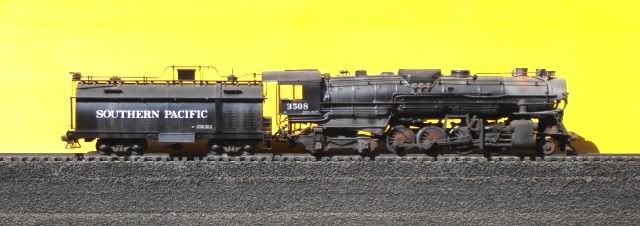It's a very distinctive beast. Perhaps we could appreciate it better if we understood the design and operation of that appliance ...
http://www.steamlocomotive.com...feedwaterheaters.php
Open Feedwater Heaters
In an open feedwater heater both the feedwater and steam are allowed to mix. This required two pumps. One disadvantage of open feedwater heaters was that the valve lubrication oil present in the exhausted steam was mixed with the feedwater going into the boiler. A Worthington feedwater heaters is an example of an open feedwater heater.
Closed Feedwater Heaters
In a closed feedwater heater the feedwater is run through a small pipe which is contained in a chamber of steam. Condensed steam is collected and piped back into the tender. One disadvantage of closed feedwater heaters was that the additional small copper piping was prone to leaks. The Elesco and Coffin feedwater heaters are examples of this type. The company name "Elesco" was taken from "Locomotive Superheater Company". "LSCo" is pronounced "El" "Es" "Co" or "Elesco".
Feedwater Heater Identification
Feedwater heaters on steam locomotives are easily identified by their location and shape. Elesco bundle type feedwater heaters were often contained within a cylinder mounted horizontally above the smokebox. They can also be partially inset within the top of a smokebox. Coffin feedwater heaters were designed to be contained within the top of a smokebox. However, when retrofitted, they were mounted in front of the smokebox. Worthington BL type feedwater heaters were often mounted on the side of a locomotive and may look like an air pump to the untrained eye. Worthington SA type feedwater heaters were inset into the top of the smokebox. By 1930 most steam locomotives were built with feedwater heaters and the Worthington SA type was the most popular.













